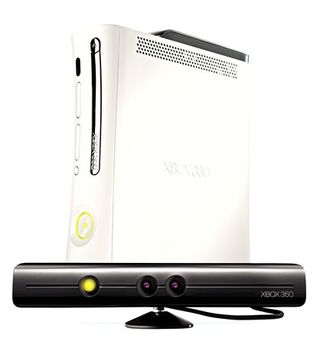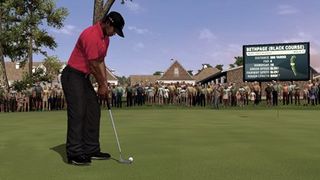From here on out Microsoft are making their play for the masses, and it has all kicked off with a New Scientist feature on how Natal actually works. Natal senses motion by flooding your gaming room with infrared light while monochrome cameras record just how much light is being bounced back. Natal’s software evaluates the position of your body 30 times every second and translates it into something your 360 can understand.

Natal understands that hands are connected to arms and that your feet are usually at the end of your legs, and can effectively guess at the positions of those parts even if your hand is behind your back or if someone walks in front of the camera. According to New Scientist it can place the position of an object to within four centimeters, which is less precise than real motion capture but accurate enough for swinging golf clubs and head tracking.
The cost to your console is just 50 Meg on your hard drive but around 15% of the 360’s processor time. It’s more costly than we had expected – our sources informed us shortly before E3 that Natal would have its own built-in processor, but following CES those same sources revealed the dedicated processor was out and that Natal would place the entire workload on the 360’s CPU. It lowers the price of the add-on, and should let Microsoft sell it for under $75/£50 or bundle it free with a newer, slimmer 360, but it means the 100ms lag time which we’ve encountered in our playtests is still apparent.
It’s what led Jon Burton from LEGO game-makers Traveller’s Tales to complain to industry mag Develop about Natal’s potential for gaming. Burton considers the lag a critical problem and is more impressed by Sony’s fast and millimeter-perfect pointer than Natal, though he reckons the software behind Natal “stunned him”. Sony’s pointer is old technology perfected while Microsoft’s system is the first to track an entire body. It’s an amazing first for any home technology, even if we do eventually wind up just ignoring all the kicky punchy games and play near-motionless with a controller in our hands while Natal tracks our head movements to let us peek around corners.

Above: Tiger Woods would be Natal-friendly, but here's hoping he doesn't cheat on it
According to Microsoft, 80% of the world’s publishers are working on Natal. It’s a list which includes Activision, Ubisoft, Square, Bethesda, EA, Konami, and now Capcom. Capcom’s (breathe) Vice President of Strategic Planning and Business Development Christian Svensson announced during CES thatCapcom is working on several projects, including the resurrection of a “brand we haven’t seen in a while”.
Given Svensson’s suggestion that Capcom aren’t treating Natal as a gimmick and that they’re making a ‘gamer’s game’, speculation is leaning towards the likes of Power Stone, Strider, and Ghouls ‘N’ Ghosts, but we’re betting on something more Xboxy – how about a next generation Steel Battalion? Skip the story ahead 30 years or so and we could replace the huge twin-stick controller with an all-new ‘holographic’ on-screen touch-controlled interface and full-body motion controls like Quaritch’s robosuit whatchamacallit from Avatar.
It’s all led to Microsoft shifting the end of the generation back half a decade, and making the Xbox 360/PS3 generation the longest in console history. “The Xbox 360 is the console of the long future for us,” MS’ David Hufford told The Guardian. “We’re able to give this console new life either with software upgrades or hardware upgrades like Project Natal. The Xbox 360 was designed for a long life, and I don’t even know if we’re at the midpoint yet.” By 2015 the 360’s tech will cost peanuts and fit in a box the size of a hardback book, and as our recent story on Crysis 2 proves– there’s a lot of potential in Microsoft’s big white box even if it lasts long enough to become Microsoft’s little white box.

Above: Will Vanquish make use of Natal?
Since Natal chews up a chunk of your processor’s time you can forget about seeing old games patched to support Natal, but from the end of this year onwards you can bet on almost every new game supporting it in some fashion. The increasingly stagnant Tiger Woods games are long overdue for an overhaul, and a Natal-powered game in 2011 would let EA cling on to their old engine for a few more years. Meanwhile, even the likes of Halo Reach, Crysis, Doom 4, and maybe Shinji Mikami’s next big game Vanquish could use it for head tracking and other in-game interactions.
Start comparing Microsoft’s public plans and patents and you start to see the picture Microsoft are painting for the future of gaming. Between Natal, their system for creating an in-game avatar - which is exactly like you right down to health and physical fitness, and their electromyographic control scheme, it’s nothing short of the first step toward Star Trek holodecks and The Matrix.
The latest futuristic development from Microsoft’s labs is – in their words – an “interaction methodology which senses and decodes muscular activity rather than relying on visible actuations”. In short, the EMG sensor reads every motion you make with whichever muscles it’s hooked up to and translates it to something in a computer program. It’s a system designed to allow people to operate computers even with their hands full – squeezing thumb and forefinger together to skip MP3 tracks while cycling, for instance – but it has been demoed with a modified Guitar Hero. With sensors attached to your arm, the system can sense thumb and finger movements and turn it into fret presses even without the plastic guitar. Just pray you don’t get an itch when playing.

Above: Another MS tech advance
Microsoft’s tech heads are already turning the wired tech into a wireless armband, which probably puts us within 15 years or so of a Microsoft-branded full-body condom thing which senses everything from a flex of our biceps to a wobble of our by-then distinctly rounded middle-aged bellies. Natal will certainly be the stepping stone for reaching that lofty goal.
Mar 2, 2010


A Photoshopped vision of the future for the 360's motion-capture controller

Pressing buttons on cue can be more than just a crutch – here's proof
